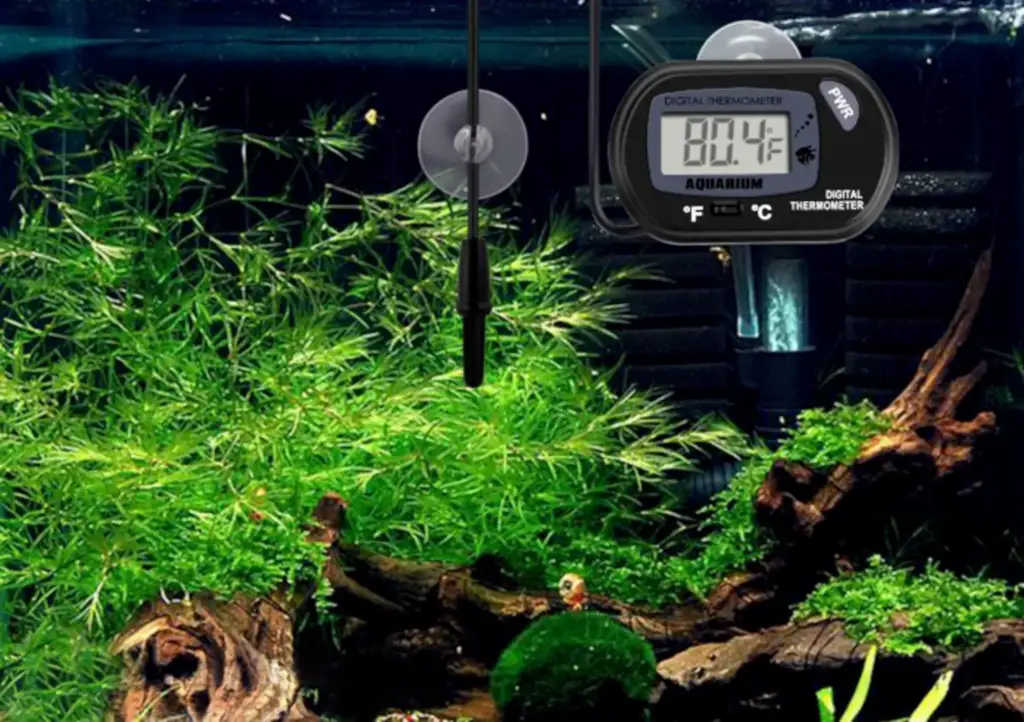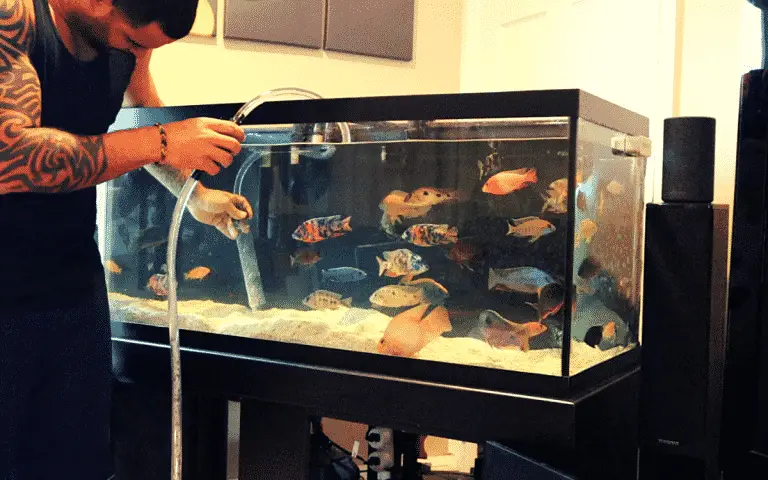The 3 Types of Aquarium Thermometers (Pros & Cons)
Aquarium thermometers are a small but important component of your aquarium. Although the tank may appear to be in good condition, shifting or incorrect water temperatures can be harmful to both fish and plants. Having a decent thermometer to track the temperature of your water at different times and days will help you discover and address problems caused by temperature variations.
Now which aquarium thermometer best fits your and your aquarium’s needs? There are three basic types of thermometers:
- Stick-On (LCD) Thermometers
- Floating or Standing Thermometers
- Digital Thermometers
In this article, we’ll dive into each type of aquarium thermometer, some useful tips and pros and cons to help you decide.
What Is an Aquarium Thermometer?
An aquarium thermometer is a device that measures the temperature of the water in a tank — making it just one of the essential temperature control components. There are numerous aquatic plants and creatures that can only thrive at specific temperatures. A temperature check must form part of your daily routine to ensure your fish and plants are all happy and healthy.
Types of Aquarium Thermometers
Aquarium thermometers are classified into three types: stick on the exterior, float or stand in the water and digital meters. Each basic type includes multiple subtypes, each with its own set of advantages and disadvantages.
Different thermometers are better suited to different aquarium types and sizes. We recommend using a thermometer in every aquarium, regardless of the kind. Temperatures should be recorded on a regular basis to verify that the aquarium water temperature is steady and within the appropriate range for your fish.

Stick-On (LCD) Thermometers
Stick-on thermometers are the most often used thermometer in freshwater aquariums since they are frequently included with new aquarium packages. They are often known as LCD (Liquid Crystal Display) thermometers and are sometimes referred to as “digital” thermometers, which are not completely accurate.
LCD thermometers are precise enough for ordinary usage, adaptable, simple to use and reasonably priced. Many of these thermometers feature dual Fahrenheit and Celsius scales. The temperature range varies from model to model, but most have a large enough range to accommodate regular, tolerable low and high temperatures.
There is considerable controversy about the effect of room air temperature on these sorts of thermometers, which are positioned on the exterior of the tank and can be influenced by air temperature and the thickness of the glass between the thermometer and the aquarium water.
Quick Tip
Avoid placing LCD thermometers in direct sunlight or near a heating or cooling vent — aquariums should not be put in such areas in the first place. Also, do not set the thermometer below the level of the gravel, since the reading will be less accurate due to the low water flow through the substrate. Finally, the thermometer reads best when looked directly on, so position it properly. It’s not in an optimal spot if you have to bend your body merely to view the thermometer.
Pros
- Unbreakable
- Easy to apply
- Can be placed in multiple locations
Cons
- Can be hard to read in low light
- No alert feature
- Less accurate than digital

Floating or Standing Thermometers
Floating or standing thermometers are put inside the aquarium to provide a more direct measurement of the water temperature. There are thermometers that attach o the inside of the tank with a suction cup, thermometers that hang on the inside with a clip, thermometers that just float around in the water and weighted types that sink and stand on the bottom of the tank.
The most significant disadvantage of these sorts of aquarium thermometers is that the majority consists of glass and is hence more fragile than other varieties. If you have big, loud fish in your tank, this is not a good thermometer to use.
Another disadvantage is that the scale is generally in smaller text than on other types of thermometers, making it difficult to read precisely. This is compensated by the fact that many thermometers include a colored “safe” zone engraved on them, allowing for a rapid visual temperature check.
Quick Tip
These, like LCDs, may be placed wherever they are needed, but unlike stick-on thermometers, they can be moved to capture readings in various regions of the aquarium. Multiple thermometers can be used at either end of a big aquarium.
Pros
- Can be placed in multiple locations
- Not impacted by ambient room temperature
- Easily viewable “safe” zone
- Inexpensive
Cons
- Difficult to read scale
- Less accurate than digital thermometers
- Breakable
- No alert feature

Digital Thermometers
Digital thermometers are made up of a probe that is either permanently or temporarily inserted in the aquarium water and links to a digital display outside the tank. Some are wireless, while others use a connection to physically link the probe to the display.
In general, these devices run on batteries, while a few high-end ones connect to a power outlet. Typically, the sensor probe is mounted to the display, which might be ugly. Some variants house both the sensor and the display within the tank. There is a potential of battery leaking in the tank with them.
Some versions have an auditory alert feature that sounds an alarm if the temperature goes outside of the preset range. Most low-cost versions do not include a warning or display in more than one scale.
Quick Tips
Check the probe cord length before selecting a style, as it varies from model to model. The temperature ranges that can be read, like with other types of thermometers, vary. Remember that, while these models are often set in one location, you may easily relocate them to take a reading in a problem section of the tank.
Pros
- Reading can be taken in any location
- Not impacted by ambient room temperature
- Unbreakable
- Easy to read
- Temperature alert feature
- Generally the most accurate
Cons
- Sometimes unsightly to have a probe attached to display
- Alert feature could be annoying
- Most require batteries to run
- Most expensive type
- A cord can be annoying
Invest in a Temperature Controller
Now, a temperature controller isn’t necessarily an aquarium thermometer, but it can give you more control over your tank’s water temperature. This video explains why you need to invest in an aquarium temperature controller:
Accurately Read Aquarium Thermometers With Crystal Clear Water
Aquarium thermometers are crucial to your fish and plants’ overall health and well-being. There are a few different types of thermometers you can choose from — LCD, floating or standing and digital. Want to know what the best aquarium thermometers are? We found a list of the six best aquarium thermometer models on the market.

Accurate temperature readings are essential, so, a clean and pristine aquarium is a priority. Water changes, vacuuming and general maintenance will help clean the water. But there is more to learn to maintain crystal clear aquarium water.
-
The 3 Types of Aquarium Thermometers (Pros & Cons)
Aquarium thermometers are extremely important. Determine the best choice of aquarium thermometer for your tank, fish and plants. Learn more now!







